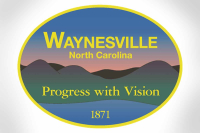Schools grapple with three doors and a tough choice
Haywood County Schools may have a tough choice to make in coming weeks: add additional teachers or give existing teachers a half-percent raise?
The Haywood School Board hoped to do both in the coming year, but likely won’t have enough money to make both a reality.
The school system asked the county for an extra $1.1 million to cover both raises and new positions. But the school will ultimately have only $280,000 in extra money to work with.
“We will come together as a board and prioritize what we want to do,” Haywood School Board Chairman Chuck Francis said. “The answer is to be determined. I think everybody is pondering the pros and cons of each.”
The $1.1 million increase requested by the school system includes:
• $225,000 to increase the local salary supplement for teachers.
Related Items
• $525,000 for 11 new positions.
• $170,000 in obligatory raises for locally paid teachers, in the event state lawmakers pass some sort of teacher raise package.
• $55,000 to cover increased costs of retirement and health benefits.
The school system could tap its reserves to help make up the difference. Last year, the school system took more than $1.4 million from reserves. But that’s a slippery slope.
“If it is a recurring expense, we are good this year but what about next year?” Francis said.
Nearly everything on the schools’ wish list this year would be “recurring” — meaning the cost would be there again next year. Which makes it likely that something will have to give.
Door #1: local salary bump
One thing on the school system’s wish list that may not end up happening is a half-percent salary increase for teachers, courtesy of Haywood County rather than the state.
While the state pays teachers’ base salary, many counties offer an extra bonus to compete for teaching talent. In Haywood, the supplement stands at 4 percent.
Other counties that once had lower supplements are starting to catch up, however, and counties with bigger supplements are pulling even further ahead.
It would cost $225,000 to give Haywood’s teachers an across-the-board supplement bump of half a percent.
The school system could use the extra money it’s getting from the county this year to pay for it.
“If we feel like the money is there to provide an additional local supplement to people, we can decide to do that,” Assistant Superintendent Dr. Bill Nolte said.
But that would then leave not enough to cover the other things on their wish list, like additional teaching positions, or on their must-do list, like covering the increased cost of benefits or matching state raises for locally paid teachers.
Door #2: adding positions
Haywood County Schools have a smaller budget and fewer teachers today than five years ago, largely due to state and federal budget cuts. Haywood has 34 fewer teachers and 34 fewer teacher’s assistants than in 2008.
The school system is down a slew of other positions as well, from guidance counselors to secretaries.
This coming year, the school system hopes to make up some lost ground by adding six new teachers:
• Two new teachers to serve special needs children with disabilities.
• Two new teachers for regular classrooms.
• Two new teachers to expand advanced and honors courses at the high school level, with one position each at Pisgah and Tuscola high schools. This staff addition is one the school system is committed to, Nolte said.
The school also hopes to add two additional assistant principal positions, one additional guidance counselor and one social worker. Guidance counselors and social workers are seen as critical given the increasing number of children with difficult home environments, and aim to restore positions in this area that were lost through state cuts.
Door #3: Matching state raises, whatever that may look like
Crafting a school budget is all the more complicated given uncertainty surrounding state education funding. It’s a wildcard every year, with school systems crafting a budget based on their best guess of what the state funding picture is likely to be.
Until that shakes out, the local-funding piece of the school systems budget is difficult to nail down.
“We cannot know what will be funded and what will not be funded until we know exactly how we are funded by the state,” Nolte said.
The big question this year is whether state lawmakers will go through with a proposed raise package for teachers. If they do, the local school system will have to follow suit and dish out the same raise to teachers hired with county funds.
While most teachers’ salaries are state funded, counties use local dollars to round out staffing levels. If the state gives raises for state-paid teachers, the local school system would have to come up with money to give commiserate raises to the locally-paid teachers.
But it’s unclear what lawmakers will do.
In an election year, the talk about raising teacher pay could be just that — talk — in an attempt to counter the political backlash over stagnating teacher salaries that now have the state ranked 46th in teacher pay.
The school system funds 164 positions with local funds: janitors, maintenance workers, IT support, secretaries and school resource officers. Of the total locally-paid positions, 60 are teachers or other certified personnel entitled to a raise depending on what the state does.
It would cost roughly $170,000 to match the raise package being considered by lawmakers for state-paid teachers. “We should and must provide the same pay increases for people who do similar jobs,” Nolte said.













